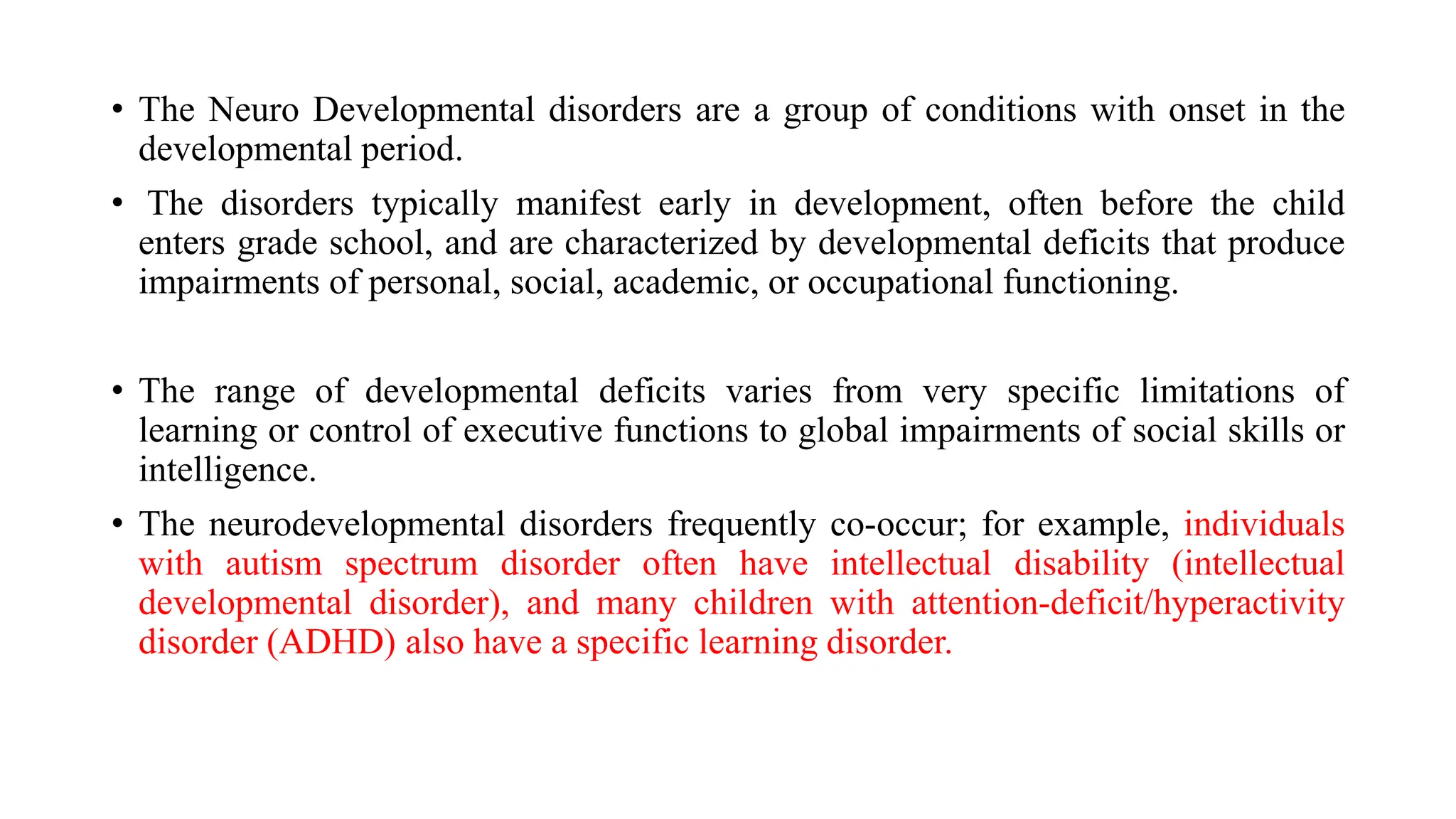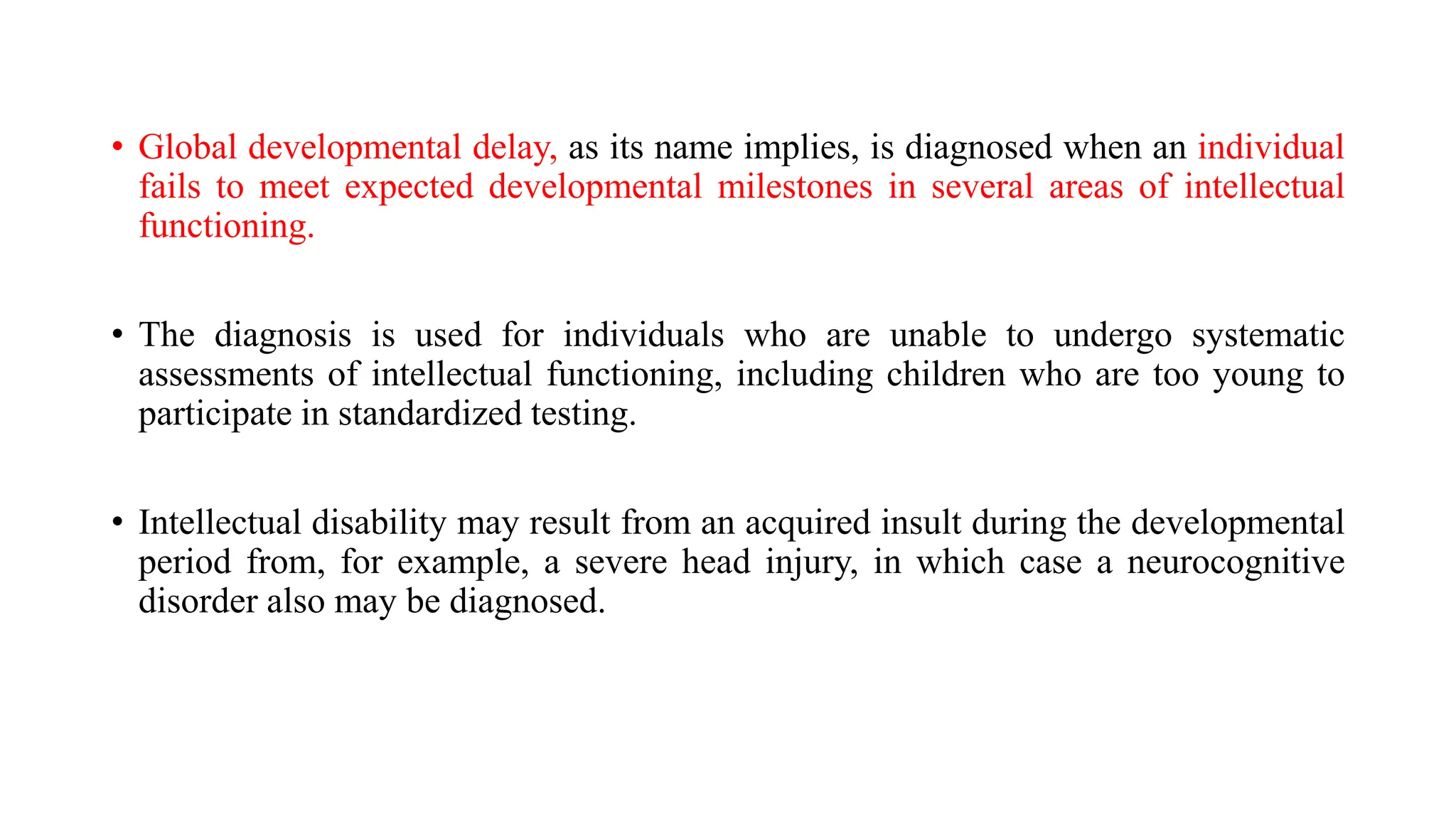The document discusses neurodevelopmental disorders including intellectual disability. Key points:
- Neurodevelopmental disorders have onset in childhood and affect development in areas like intelligence, language, motor skills and social skills.
- Intellectual disability is characterized by deficits in general mental abilities and impairments in daily living.
- Communication disorders involve deficits in language, speech, or social communication skills from a young age.
- Diagnosis involves assessing intellectual functioning, adaptive skills, onset during development, and ruling out other causes.

























![• B. The disturbance causes anxiety about speaking or limitations in effective
communication, social participation, or academic or occupational performance,
individually or in any combination.
• C. The onset of symptoms is in the early developmental period. (Note: Later-onset
cases are diagnosed as 307.0 [F98.5] adult-onset fluency disorder.)
• D. The disturbance is not attributable to a speech-motor or sensory deficit,
dysfluency associated with neurological insult (e.g., stroke, tumor, trauma), or
another medical condition and is not better explained by another mental disorder.](https://image.slidesharecdn.com/neurodevelopmentaldisorder-240205191815-433e6ac0/75/Neuro-Developmental-Disorder-22pptx-pptx-26-2048.jpg)

